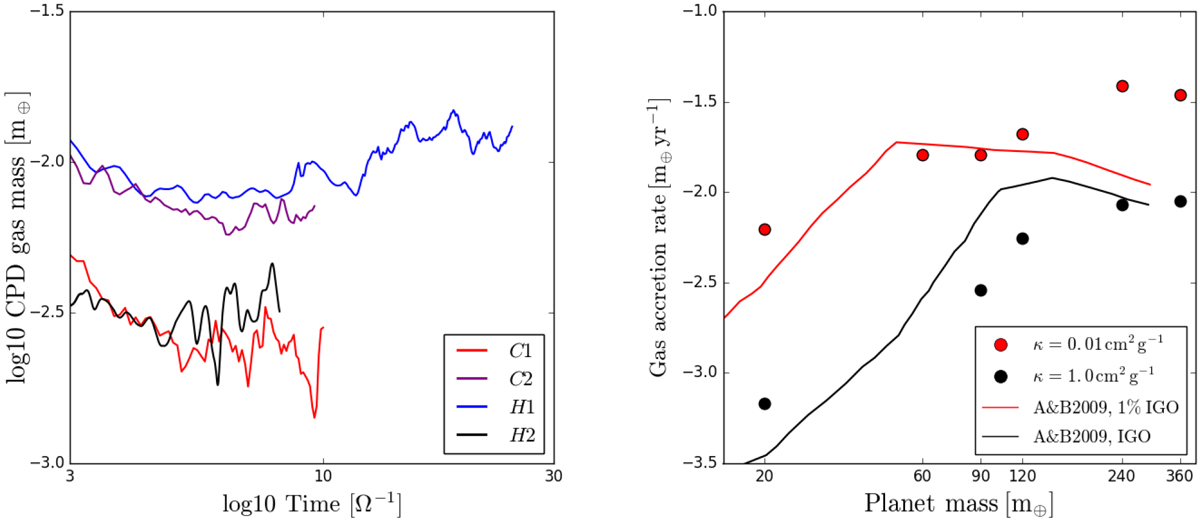Fig. 17

Circumplanetary disc masses for the Jupiter-mass planets (left) seem to remain stable after the initial two orbits of ramp-up time of rs. The CPDs, with the exception of C1, start accreting with gas accretion rates in the range of 1–4 × 10−5 m⊕ yr−1, corresponding to growth times for the Galilean satellites between 80 kyr and 0.32 Myr. Simulations are not run for the same number of orbits due to runtime restrictions. Mass accretion rates onto the planets as a function of planet mass and opacity (right). We note similarities to Lambrechts et al. (2019), which used Bell & Lin opacities for a similar mass range. Earlier results from Ayliffe & Bate (2009b) using SPH simulations and interstellar grain opacities (IGO) agree with ours inthe mid-mass range, but our low masses accrete visibly more and the high masses do not seem to converge on a single disc-limited accretion rate. One could speculate that this is related to the strong disc inflow that triggers the CSD spiral arm tilt, effectively increasing the mass inflow.
Current usage metrics show cumulative count of Article Views (full-text article views including HTML views, PDF and ePub downloads, according to the available data) and Abstracts Views on Vision4Press platform.
Data correspond to usage on the plateform after 2015. The current usage metrics is available 48-96 hours after online publication and is updated daily on week days.
Initial download of the metrics may take a while.


